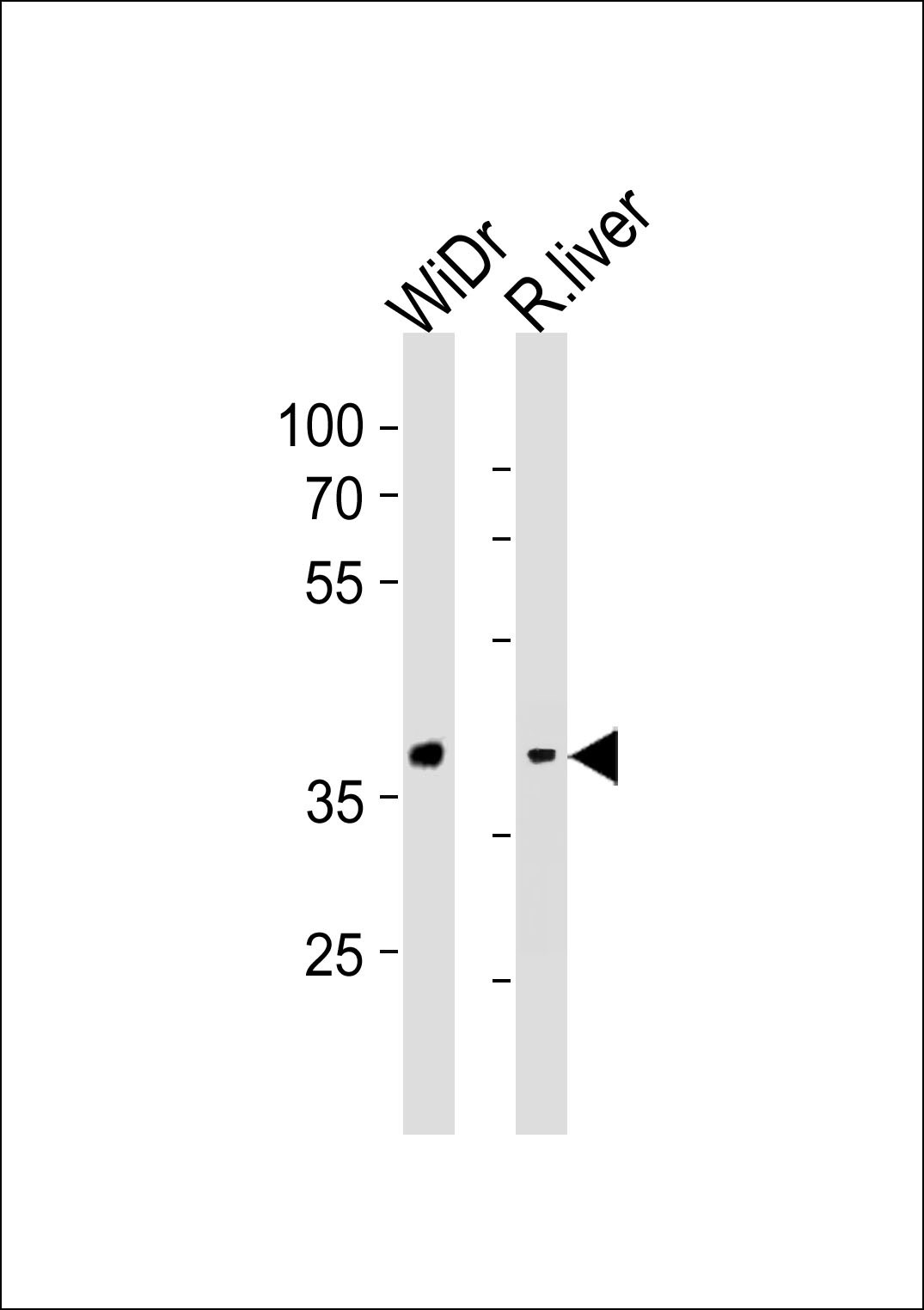GPR4 Antibody (Center)
Affinity Purified Rabbit Polyclonal Antibody (Pab)
- 产品详情
- 实验流程
- 背景知识
Application
| WB, E |
|---|---|
| Primary Accession | P46093 |
| Other Accession | P50132 |
| Reactivity | Human, Rat, Mouse |
| Predicted | Pig |
| Host | Rabbit |
| Clonality | Polyclonal |
| Isotype | Rabbit IgG |
| Calculated MW | 40982 Da |
| Antigen Region | 196-224 aa |
| Gene ID | 2828 |
|---|---|
| Other Names | G-protein coupled receptor 4, G-protein coupled receptor 19, GPR4, GPR19 |
| Target/Specificity | This GPR4 antibody is generated from rabbits immunized with a KLH conjugated synthetic peptide between 196-224 amino acids from the Central region of human GPR4. |
| Dilution | WB~~1:1000 E~~Use at an assay dependent concentration. |
| Format | Purified polyclonal antibody supplied in PBS with 0.09% (W/V) sodium azide. This antibody is purified through a protein A column, followed by peptide affinity purification. |
| Storage | Maintain refrigerated at 2-8°C for up to 2 weeks. For long term storage store at -20°C in small aliquots to prevent freeze-thaw cycles. |
| Precautions | GPR4 Antibody (Center) is for research use only and not for use in diagnostic or therapeutic procedures. |
| Name | GPR4 {ECO:0000303|PubMed:7832990, ECO:0000312|HGNC:HGNC:4497} |
|---|---|
| Function | Proton-sensing G-protein coupled receptor activated by extracellular pH, which is required to monitor pH changes and generate adaptive reactions (PubMed:12955148, PubMed:17462861, PubMed:33478938, PubMed:39753132, PubMed:39799123). Activated by an optimal pH of 6.8- 7.2 (PubMed:12955148, PubMed:17462861, PubMed:39753132). Ligand binding causes a conformation change that triggers signaling via guanine nucleotide-binding proteins (G proteins) and modulates the activity of downstream effectors, such as adenylate cyclase (PubMed:39753132). GPR4 is mainly coupled to G(s) G proteins and mediates activation of adenylate cyclase activity (PubMed:12955148, PubMed:17462861, PubMed:20211729, PubMed:22110680, PubMed:39753132). May also couple with G(q) and G(12)/G(13) G proteins (PubMed:12955148, PubMed:17462861, PubMed:20211729, PubMed:22110680). Acts as a key regulator of respiratory sensitivity to CO2/H(+) in brain retrotrapezoid nucleus neurons: acts by mediating detection of protons generated by the formation of carbonic acid in the blood, an important mechanism to impulse to breathe (By similarity). Also acts as a regulator of acid secretion in the kidney collecting duct by maintaining acid-base homeostasis in the kidney (By similarity). Acidosis-induced GPR4 activation increases paracellular gap formation and permeability of vascular endothelial cells, possibly through the G(12)/G(13)/Rho GTPase signaling pathway (PubMed:32058960). |
| Cellular Location | Cell membrane; Multi-pass membrane protein |
For Research Use Only. Not For Use In Diagnostic Procedures.
Provided below are standard protocols that you may find useful for product applications.
BACKGROUND
Proton-sensing receptor coupled to several G-proteins, including G(s), G(13) and G(q)/G(11) proteins, leading to cAMP production.
REFERENCES
Heiber M., et al. DNA Cell Biol. 14:25-35(1995).
Mahadevan M.S., et al. Genomics 30:84-88(1995).
An S., et al. FEBS Lett. 375:121-124(1995).
Kaighin V.A., et al. Submitted (DEC-2007) to the EMBL/GenBank/DDBJ databases.
Ota T., et al. Nat. Genet. 36:40-45(2004).
终于等到您。ABCEPTA(百远生物)抗体产品。
点击下方“我要评价 ”按钮提交您的反馈信息,您的反馈和评价是我们最宝贵的财富之一,
我们将在1-3个工作日内处理您的反馈信息。
如有疑问,联系:0512-88856768 tech-china@abcepta.com.























 癌症的基本特征包括细胞增殖、血管生成、迁移、凋亡逃避机制和细胞永生等。找到癌症发生过程中这些通路的关键标记物和对应的抗体用于检测至关重要。
癌症的基本特征包括细胞增殖、血管生成、迁移、凋亡逃避机制和细胞永生等。找到癌症发生过程中这些通路的关键标记物和对应的抗体用于检测至关重要。 为您推荐一个泛素化位点预测神器——泛素化分析工具,可以为您的蛋白的泛素化位点作出预测和评分。
为您推荐一个泛素化位点预测神器——泛素化分析工具,可以为您的蛋白的泛素化位点作出预测和评分。 细胞自噬受体图形绘图工具为你的蛋白的细胞受体结合位点作出预测和评分,识别结合到自噬通路中的蛋白是非常重要的,便于让我们理解自噬在正常生理、病理过程中的作用,如发育、细胞分化、神经退化性疾病、压力条件下、感染和癌症。
细胞自噬受体图形绘图工具为你的蛋白的细胞受体结合位点作出预测和评分,识别结合到自噬通路中的蛋白是非常重要的,便于让我们理解自噬在正常生理、病理过程中的作用,如发育、细胞分化、神经退化性疾病、压力条件下、感染和癌症。






